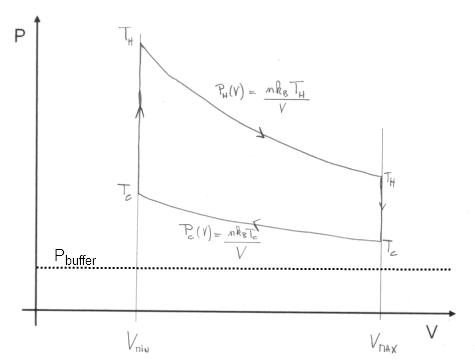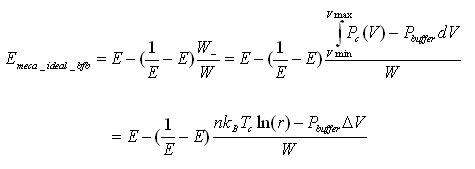| Home |
| Stirling Engines |
| State of the Art |
| Theory |
Theory 6 - Pressurization of ideal Stirling cycle engines
Optimally buffered engines
When increasing by a factor K the mean pressure of optimally buffered ideal cycle engine we increase by a factor K the number of gas molecules in the workspace.
According to equation presented in chapter 5, the output shaft work is also increased by a factor K. Optimally buffered engines means that the buffer pressure is also increased by a factor K (to be equal to internal mean pressure).
This linear relationship between shaft output and mean pressure keeps true for non-ideal optimally buffered engines.
Engines buffered from bellow
By definition engines of that kind have a workspace pressure that is always higher then buffer pressure. This kind of engines are not advantageous from a theoretical point of view (optimally buffered engines are better) but could be advantageous to solve technical issues (to avoid large external pressure vessels, to prevent lubricant migration etc...)

Starting from equation of chapter 3, the mechanical efficiency of such engines Emeca_ideal_bfb (buffered from below) is:

The condition for the engine to run is

Resolving this equivalence gives the following condition for engines buffered from bellow:

For the very worst case (Pbuffer=0) this condition reduces to E2 >= τ
The output work for each cycle is:

|
Theory index Theory 1 - Generic
schematic |